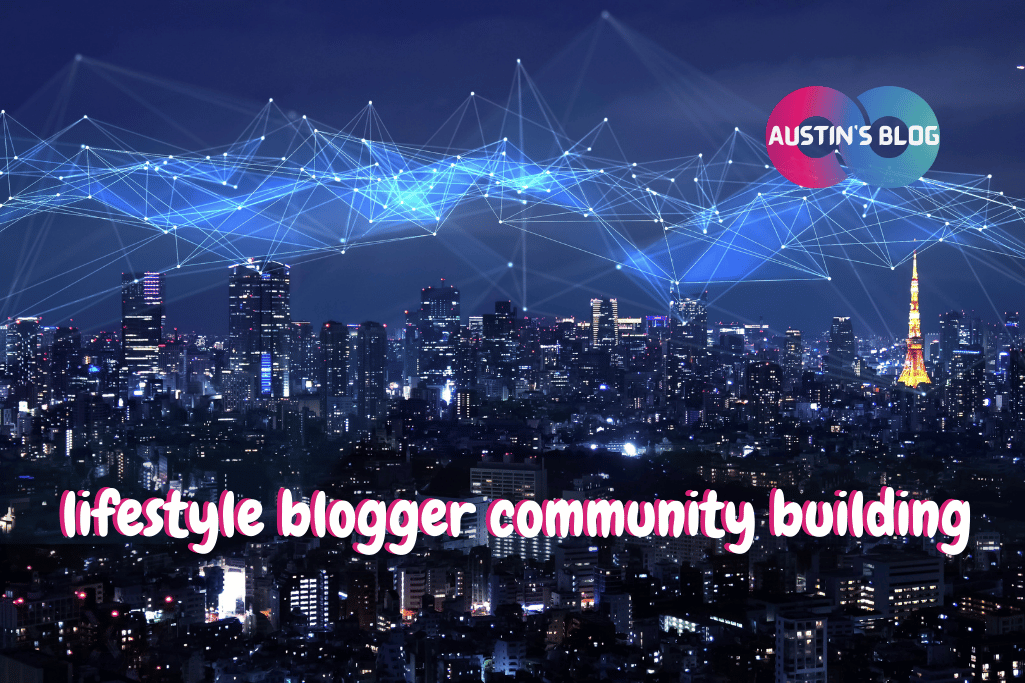Smart Ways to Build a Lifestyle Blogging Community in 2025
Introduction
Hey there, fabulous lifestyle bloggers! Today, we’re diving into something that’s close to my heart and crucial for your blogging success – building a community around your blog.
When I first started blogging, I thought it was all about churning out content and waiting for the readers to roll in.
Boy, was I wrong! I quickly realized that the magic of blogging isn’t just in the posts you write, but in the connections you forge with your readers and fellow bloggers.
I remember the first time I received a comment from a reader sharing how my post about overcoming self-doubt had resonated with them.
It was like a light bulb moment – this wasn’t just about me sharing my life; it was about creating a space where people could connect, share, and grow together.
So, grab your favorite beverage (I’m sipping on a matcha latte as I write this), get comfy, and let’s explore how to build a vibrant, engaged community around your lifestyle blog.
Trust me, it’s going to transform your blogging journey!
Why Community Matters for Lifestyle Bloggers
Before we dive into the how-tos, let’s talk about why building a community is so crucial:
- Loyal Readership: A strong community means readers who keep coming back.
- Engagement: Community members are more likely to comment, share, and interact with your content.
- Content Ideas: Your community can be a goldmine of inspiration for future posts.
- Networking: A thriving community attracts opportunities for collaborations and partnerships.
- Monetization: An engaged community is more likely to support your monetization efforts, whether it’s buying your products or using your affiliate links.
- Emotional Fulfillment: Building connections with your readers adds a deeply rewarding dimension to blogging.
Understanding Your Audience: The Foundation of Community Building
Before you can build a community, you need to know who you’re building it for. Here’s how to get started:
- Create Reader Personas: Develop detailed profiles of your ideal readers. What are their interests, challenges, and goals?
- Conduct Surveys: Use tools like Google Forms or SurveyMonkey to ask your readers about themselves and what they want from your blog.
- Analyze Your Analytics: Use Google Analytics to understand your readers’ demographics, interests, and behavior on your site.
- Engage in Comments: Pay attention to what your readers are saying in the comments section. What topics spark the most discussion?
- Monitor Social Media: What content of yours gets shared the most? What questions do people ask you on social platforms?
Pro Tip: Create a “reader avatar” – a detailed description of your ideal reader. Give them a name, a backstory, and specific characteristics. This can help you create content and community initiatives that really resonate.
Creating Content That Fosters Community
The right kind of content can naturally encourage community building. Here are some ideas:
- Share Personal Stories: Being vulnerable and authentic can encourage readers to open up too.
- Ask Questions: End your posts with thought-provoking questions that encourage readers to share their own experiences.
- Create Series: A series of related posts can keep readers coming back and discussing each installment.
- User-Generated Content: Encourage readers to submit their own stories, photos, or tips related to your blog topics.
- Expert Interviews: Feature interviews with experts in your niche. This adds value for your readers and can attract the expert’s audience too.
- Collaborative Posts: Partner with other bloggers or invite multiple contributors for a post. This can cross-pollinate communities.
Pro Tip: Create a recurring series specifically designed to showcase your community. This could be a “Reader of the Month” feature or a “Community Spotlight” where you share user-submitted content.
Engaging With Your Readers: The Heart of Community Building
Engagement is key to building a strong community. Here’s how to foster it:
- Respond to Comments: Always reply to comments on your blog posts. Show your readers that you value their input.
- Create a Community Platform: Consider starting a Facebook group, Discord server, or forum where readers can interact with each other.
- Host Live Sessions: Use platforms like Instagram Live or YouTube Live to interact with your audience in real-time.
- Email Newsletter: Use your newsletter not just to share content, but to ask questions and encourage replies.
- Social Media Engagement: Regularly interact with your followers on social media platforms. Share their content, respond to their comments, and join in conversations.
- Acknowledge Active Members: Give shout-outs to particularly engaged community members. This encourages further participation.
Pro Tip: Set aside dedicated time each day for community engagement. It’s as important as creating content!
Hosting Events and Challenges
Events and challenges can be great for bringing your community together:
- Virtual Meetups: Host regular video chat sessions where community members can meet and interact.
- Challenges: Create themed challenges related to your niche. For example, a 30-day decluttering challenge for a home organization blog.
- Book Clubs: If relevant to your niche, start a book club where members read and discuss a book each month.
- Webinars or Workshops: Host online learning events. These could be free or paid, depending on the content.
- In-Person Meetups: If feasible, organize local meetups or attend conferences where you can meet readers in person.
- Annual Community Awards: Create awards to recognize active and valuable community members.
Pro Tip: After each event or challenge, ask for feedback and use it to improve future initiatives.
Leveraging Technology for Community Building
There are many tools and platforms that can help you build and manage your community:
- Comment Systems: Tools like Disqus can make commenting easier and more engaging.
- Community Platforms: Consider platforms like Circle, Mighty Networks, or Tribe for creating dedicated community spaces.
- Social Media Management Tools: Use tools like Hootsuite or Buffer to manage and schedule your social media engagement.
- Email Marketing Platforms: Services like ConvertKit or Mailchimp allow for segmentation and personalization in your email communications.
- Live Streaming Tools: Platforms like StreamYard or OBS Studio can help you create professional-looking live streams.
- Membership Site Plugins: If you’re on WordPress, plugins like MemberPress or WishList Member can help you create exclusive community areas.
Pro Tip: Don’t feel pressured to use every tool out there. Choose the ones that best fit your community’s needs and your management style.
Moderating Your Community
As your community grows, you’ll need to ensure it remains a positive, safe space:
- Establish Clear Guidelines: Create and communicate clear community guidelines.
- Lead by Example: Model the behavior you want to see in your community.
- Address Issues Promptly: Deal with any conflicts or inappropriate behavior quickly and fairly.
- Recruit Moderators: As your community grows, consider recruiting trusted members to help with moderation.
- Use Moderation Tools: Many platforms offer built-in moderation tools. Familiarize yourself with these.
- Provide Multiple Channels for Reporting Issues: Make it easy for community members to report problems.
Pro Tip: Regularly review and update your community guidelines as your community evolves.
Measuring Community Health and Growth
To ensure your community-building efforts are effective, you need to track some key metrics:
- Engagement Rate: Look at comments, shares, and likes relative to your audience size.
- Community Growth: Track the number of new members joining your community platforms.
- Retention Rate: Monitor how many members remain active over time.
- User-Generated Content: Keep track of how much content is being created by community members.
- Response Time: How quickly are you or your moderators responding to community questions or issues?
- Sentiment Analysis: Use tools to analyze the overall sentiment in your community discussions.
Pro Tip: Create a monthly “Community Health Report” for yourself. This can help you spot trends and areas for improvement.
Balancing Community Building with Personal Boundaries
Building a community can be incredibly rewarding, but it’s important to maintain healthy boundaries:
- Set Clear Expectations: Let your community know when and how you’ll engage with them.
- Protect Your Personal Information: Be careful about how much personal information you share.
- Take Breaks: It’s okay to step back from community engagement when you need to. Communicate this to your community.
- Don’t Take Things Personally: Remember that not every community member will agree with you, and that’s okay.
- Seek Support: If managing your community becomes overwhelming, don’t hesitate to seek help or professional support.
Pro Tip: Create a self-care routine that helps you recharge after intense periods of community engagement.
The Future of Community Building for Lifestyle Bloggers
As we look to the future, here are some trends to keep in mind:
- Micro-Communities: We may see a shift towards smaller, more niche communities.
- Increased Use of AI: AI tools might help with community management and personalization.
- Virtual and Augmented Reality: These technologies could create new ways for community members to interact.
- Emphasis on Privacy: As data privacy concerns grow, community platforms with strong privacy features may become more popular.
- Integration of Web3 Technologies: Blockchain and cryptocurrency might play a role in community rewards and governance.
Pro Tip: Stay curious and open to new technologies, but always prioritize what works best for your specific community.
Conclusion: Your Community Awaits!
Wow, we’ve covered a lot of ground! From understanding the importance of community to leveraging technology and preparing for the future, you now have a comprehensive toolkit for building a thriving community around your lifestyle blog.
Remember, building a community is a journey, not a destination. It takes time, effort, and a whole lot of heart.
There will be challenges along the way, but the rewards – the connections, the shared experiences, the feeling of belonging – are truly priceless.
Start small. Maybe begin by responding to every comment on your next blog post, or by asking a question at the end of your next newsletter.
Every interaction is a building block in your community.
I’d love to hear from you! What’s your biggest challenge in building a community around your blog? Or do you have a community-building success story to share?
Drop a comment below and let’s chat. After all, that’s what community is all about!
Remember, your blog isn’t just a platform – it’s a gathering place. A space for connection, growth, and shared experiences.
So go forth, create content that resonates, engage with your readers, and watch as your community blossoms.
Stay fabulous, keep connecting, and happy community building!
Frequently Asked Questions: How to Build a Lifestyle Blogging Community
Q: What are some effective ways to build a loyal following for a lifestyle blog?
A: Building a loyal following for a lifestyle blog involves consistently creating high-quality, engaging content that resonates with your target audience.
Engaging with your readers through comments and social media, and offering valuable insights or personal experiences can also help.
Additionally, collaborating with other lifestyle bloggers and participating in community events can expand your reach and credibility.
Q: How can I monetize my lifestyle blog effectively?
A: Monetizing a lifestyle blog can be achieved through various methods such as affiliate marketing, sponsored posts, and Google AdSense.
Many bloggers also create and sell digital products or offer services related to their niche. Building an email list can also be a powerful tool for promoting products and services to your audience.
Q: What are some lifestyle blogging examples that have successfully built a community?
A: Successful lifestyle blogging examples include those that have built a strong community by focusing on niche topics, such as fashion and lifestyle, and sharing authentic personal experiences.
Bloggers like Ruth Oladeru have created a blog that resonates with their audience by being passionate about helping others and fostering lifelong friendships within their community.
Q: How can I create searchable content for my lifestyle blog?
A: Creating searchable content involves understanding the keywords and topics your target audience is interested in.
Conducting keyword research and incorporating these terms naturally into your blog posts can improve your search engine rankings.
Additionally, writing comprehensive and informative articles that answer common questions can make your content more discoverable.
Q: What is a common mistake many bloggers make when building their community?
A: A common mistake many bloggers make is not clearly defining their target audience or niche.
Without a focused approach, it can be challenging to create content that resonates with readers.
It’s important to understand your audience’s needs and interests to build a loyal following and a successful lifestyle blog.
Q: How can affiliate marketing benefit a lifestyle blogger?
A: Affiliate marketing allows lifestyle bloggers to earn commissions by promoting products or services relevant to their niche.
By recommending products they genuinely use and trust, bloggers can provide value to their audience while generating income.
This method of monetization can be particularly effective if the blogger has built a strong, loyal following.
Q: What role does an email list play in building a blog community?
A: An email list is a crucial tool for building a blog community as it allows direct communication with your audience.
By offering exclusive content, updates, and promotions through email, bloggers can foster a sense of community and loyalty among their readers.
It also provides a platform to drive traffic back to the blog and promote monetization efforts.
Q: How can a new blog attract its first readers and start building a community?
A: A new blog can attract its first readers by promoting content on social media, engaging with other bloggers, and participating in online forums related to its niche.
Creating high-quality, valuable content and optimizing it for search engines can also help attract organic traffic.
Building relationships with readers through comments and social media interactions is essential for fostering a new community.
Q: What should I consider when deciding what to call your blog?
A: When deciding what to call your blog, consider a name that reflects your niche, is easy to remember, and resonates with your target audience.
It should be unique and convey the essence of your blog’s content.
A good blog name can help establish your brand identity and make it easier for readers to find and remember your blog.






